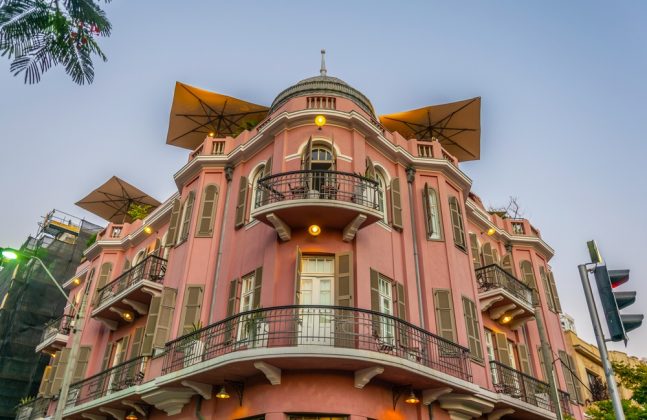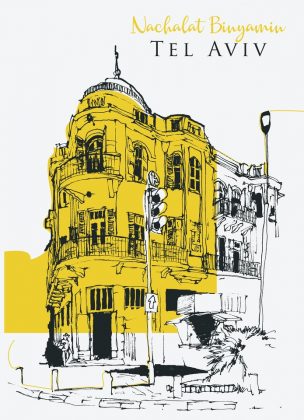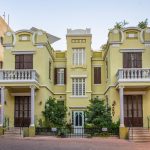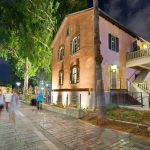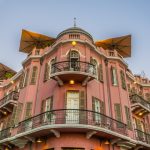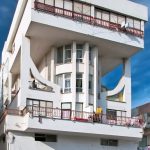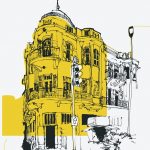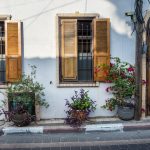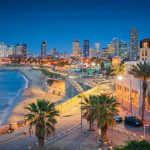Architecture in Tel Aviv is really amazing and unique. No place in the world features such an eclectic and unusual style as Tel Aviv. The diverse style of the architecture in Tel Aviv make this city a unique place in the world. Tel Aviv hosts different architectural styles; among them, the Bauhaus style is the predominant one. Indeed, in Tel Aviv, almost four-thousand buildings feature the distinctive Bauhaus design. Tel Aviv hosts the most extensive Bauhaus building collection in the world.
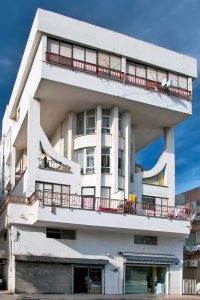
Architecture In Tel Aviv – Bauhaus
Starting from 1933, with the rise of Nazism, almost sixty-thousand German Jews fled to Israel, bringing a new art style. With the new immigration wave in Israel, it started the construction of new sets of buildings. Among European architects, the most favourite were six German Jewish architects, whose artistic education occurred at the Bauhaus school in Dessau and Weimar.
Hence, in Tel Aviv, a lot of white buildings raised featuring the centre; in particular, the White City complex, a UNESCO World Heritage Site since 2003.
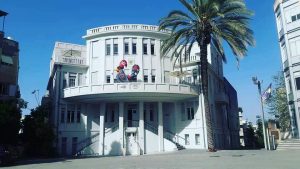
The Bauhaus style, i.e. International Style, conquered Tel Aviv with its functionalism, modernism, minimalism with distinctive clean lines and predominant white. Starting from 1930, new buildings appeared in Tel Aviv, with a unique fresh style, small windows suitable for the sunny and hot Israeli summer, and large shadowy balconies to enjoy the sea breeze.
Famous Bauhaus Buildings In Tel Aviv
- One of the most famous Bauhaus buildings in Tel Aviv is the Cinema Ester in Dizengoff square. The characteristic wave-shaped balconies, the geometrical windows, the squared columns and the support pillars are typical of the International Style, i.e. the Tel Aviv Bauhaus style.
- Dizengoff Circle is another famous building in Tel Aviv’s centre designed by the architect Genia Averbuch and erected in 1938.
- Another typical Bauhaus building in Tel Aviv is the elegant and asymmetrical Jacobson’s Building by architect Emanuel Halbrecht, constructed in 1938 in Levontin Street.
- A particular Bauhaus building, the Thermometer Building in Frug Street by architect Yehuda Liulka, was built in 1936. It shows a visual game of sharp vertical lines of diagonal and bizarre windows.
- Shimon Levi House was sketched by architect Arieh Cohen and realised in 1934 in Levanda Street, which resembles an isolated ship in the middle of the sea. The building has a curvilinear style and a grandeur that distinguish it from the rest of the constructions nearby.
- Soskin House by architect Zeev Rechter was finished in 1933 in Lilienblum Street. It was commissioned by photographer Avraham Soskin, and it is featured by sinuous curves and a vessel-like resemblance, with characteristic ribbon windows.
- Zlotopolscy House by architect Dov Karmi was built in 1935 in Gordon Street. This building has unique cubic geometry with pillars that raise the entrance. Moreover, other remarkable elements are the round venting apertures of the balconies.
- The Leon Recanati Building by architects Shlomo Liaskokski and Jacob Orenstein was completed in 1936 in Menachem Begin Road. It is a modern three-storey block of apartments with a façade with a pattern of vertical cylinders sliced by balconies; the diagonal geometry with a staggering effect allows every condo to have a sunshiny view.
- Kruskal House by architect Richard Kaufmann was completed in 1933 in Idelson Street. This house was initially lower with a more oblong shape. It’s an excellent example of using sun breakers shaped like small platforms all around the façade.
Architecture In Tel Aviv – Eclectic Style
Tel Aviv is not only a white Bauhaus colony. Indeed, the city owns a vibrant collection of Israeli styles, such as Eclectic, Brutalist, and contemporary, due to immigrant and Israeli-born architects’ influence, who considered local cultural elements and Israel’s weather.
- The Pagoda House is the most stunning example of an Eclectic Architectural Style. It was built in 1925 and is a three-storey building with elements from diverse architectural styles. It has an unusual shape similar to a traditional Chinese Pagoda, merged with Islamic arches and Greek columns. Nowadays, this beautiful house is the residence of a Swedish investor, who acquired and restored the house in the 1990s. In Tel Aviv, there are almost eight-hundred Eclectic Style buildings erected in the 1920s and designated with decorated and coloured facades, symmetrical partitions, vaults, and archways. The Eclectic style fuses East and West architectural features to create a new architectural style that distinguishes Tel Aviv’s city, whose inhabitant number grew from two-thousand in 1920 to thirty-four-thousand in 1935.
- Levine House by Yakov Levine is a sumptuous villa built in Rothschild Boulevard in 1924. One of this building’s features is a turret with a mechanical roof that can be opened to create a sukkah space. The architect was Yehuda Megidovich, Tel Aviv’s first city engineer; indeed, between 1919 and 1951, he designed more than 500 buildings in Tel Aviv, such as the House of Pillars, Nordau Hotel, Ben Nahum Hotel and the Great Synagogue.
-
Palm House by architect Tabachnick is featured by Jewish motifs combined with art-nouveau style. In the centre section of the building, there is a window with a palm tree’s shape, and this is why the building gets its name.
Architecture In Tel Aviv – Brutalism
Brutalist architecture was trendy before the mid-1970s when it started to be ignored because it did not conform to the timeless standards of beauty. Nevertheless, this unusual style later became fascinating, even with its abundance of concrete that donated a massive and solid look. The sculptural style creates designs with light and shadows. Brutalist buildings are the opposite of modern buildings, which are sleek and shiny. Indeed, Brutalism gives an impression of strength and solidity.
In the post World War II era, concrete was inexpensive, availability, and the best choice for fast construction. Hence, it was the beloved material of Israel’s early Socialist mentality because of the rapid population increase due to immigration. The exhibited raw cement of Brutalism featured a new way and style to build governmental office buildings, cultural businesses, sports stadiums and most of all, to fulfil the need for large-scale housing projects. Many of Tel Aviv’s Brutalist buildings have recently been restored for cultural aims and hospitality, such as luxury hotels and museums.
Famous Brutalist Buildings In Tel Aviv
- The El Al House was designed by the architects Dov and Ram Karmi in 1963. It houses twelve-thousand meters of indoor space over thirteen floors. The El Al House was the first office erected in Israel and is one of its first skyscrapers with a stunning panorama of the Mediterranean. It became a top real-estate office, and its bold concrete, spiral staircase, and geometry made the building a Brutalistic monument of Tel Aviv. The El AL house displays the new style of the second generation of Israeli architects, Sabras, which means born and educated in Israel. Unlike the immigrant architects, who promoted the Bauhaus Style’s white-stucco, the Sabras preferred Brutalism’s grainy and plain concrete. This new style represented contemporary society’s sobriety, with an idealism opposing World War II and the War Of Independence in 1948.
- Migdalor Building was constructed in the 1970s by architects Arieh Elhanani and Nissan Canaan. It is located at Ben Yehuda Street and Allenby Street, close to the beach. In 2018, a complete interior restoration of part of the building was operated by group Brown Hotels, and shortly it became The Lighthouse by Brown Hotels. The hotel hosts 100 guest rooms and suites with a vivacious design. There is a complete view of the White City of Tel Aviv and the Mediterranean Sea; moreover, on the 18th floor, there is the Haiku Skybar & Lounge. In 2019, the Migdalor building’s lobby was converted to WOM, the first boutique hostel in Tel Aviv with private pod rooms. Indeed it includes 48 stylish, intimate and design-led rooms at a relatively reasonable price.
-
The Mivtachim Sanitarium was built by architect Yaakov Rechter in 1968, and he earned the Israel Award for Architecture in 1973 for this project. After years of decline, a multi-million dollar restoration in 2012 transformed the building into a luxury art hotel financed by Lily Elstein, one of Israel’s most well-known philanthropists and art collectors. The Elma Luxury Arts Complex Hotel’s restoration was carried out by Yaakov’s son, Amnon Rechter of Rechter Architects. The hotel contains 95 rooms, Israel’s newest performing arts centre and acoustics, various galleries with Ms Elstein’s private art collection, including Israeli painters and Picasso, a high-class restaurant, a spa and an active art gallery that host always new exhibitions.
-
Carlton Tel Aviv by Yaakov Rechter was completed in 1981. This colossal Brutalist hotel was the first on the Mediterranean Sea beachfront of Tel Aviv. Next to Hilton Tel Aviv, a Rechter’s 1962 creation and the first International hotel group to open in the city. In 2016, Carlton Tel Aviv underwent a complete restoration and transmutation of its 268 rooms, oceanfront pool and restaurants on the 15th-floor rooftop. The two rooftop restaurants face all the Tel Aviv skyline.
-
The Tel Aviv Museum of Art instituted in 1932 and was inaugurated in 1972. It was projected by architects Dan Eytan and Yitzhak Yashar with a typical Brutalist style. It became the most important museum in Tel Aviv. The Tel Aviv Museum of Art hosts a notable collection of Israeli art, European painters, a Peggy Guggenheim Collection, a Modern art collection, a sculpture garden, and Roy Lichtenstein murals. The American architect, Scott Preston Cohen, designed the Herta and Paul Amir Wing in 2011, a modernist structure differing from the primary Brutalist building.

-
Shalom Meir Tower or Migdal Shalom was developed in 1965 as the first Tel Aviv’s skyscraper. Indeed, Meir Tower was the Middle East’s tallest building with 34 floors, because nowadays the tallest building is in Dubai’s 163-floor Burj Khalifa. Meir Tower’s was designed by architects Yitzhak Pearlstein, Gideon Ziv, and Meir Levy. Actually, Meir Tower hosts offices, a municipality library, and a tech incubator with a city’s stunning panorama. There is a permanent exhibition in the building’s lobby and upper floors that shows the history and development of Tel Aviv.
Architecture In Tel Aviv – Contemporary
In the 1990’s Tel Aviv evolved into a contemporary style city. Recently, in Tel Aviv, new modern buildings and skyscrapers had been built. Nowadays, besides the restorations of Eclectic and Bauhaus style structures, there is an increment of development of luxury complexes and glassy office buildings.
Hence, the city of Tel Aviv is a blend of old and new architectural styles. It is also the most desired city of Israel, drawing young students, artists, and entrepreneurs. Tel Aviv is also called a non-stop city because of its vivacious and animated atmosphere with 24/7 open supermarkets, restaurants, bars and nightclubs.



